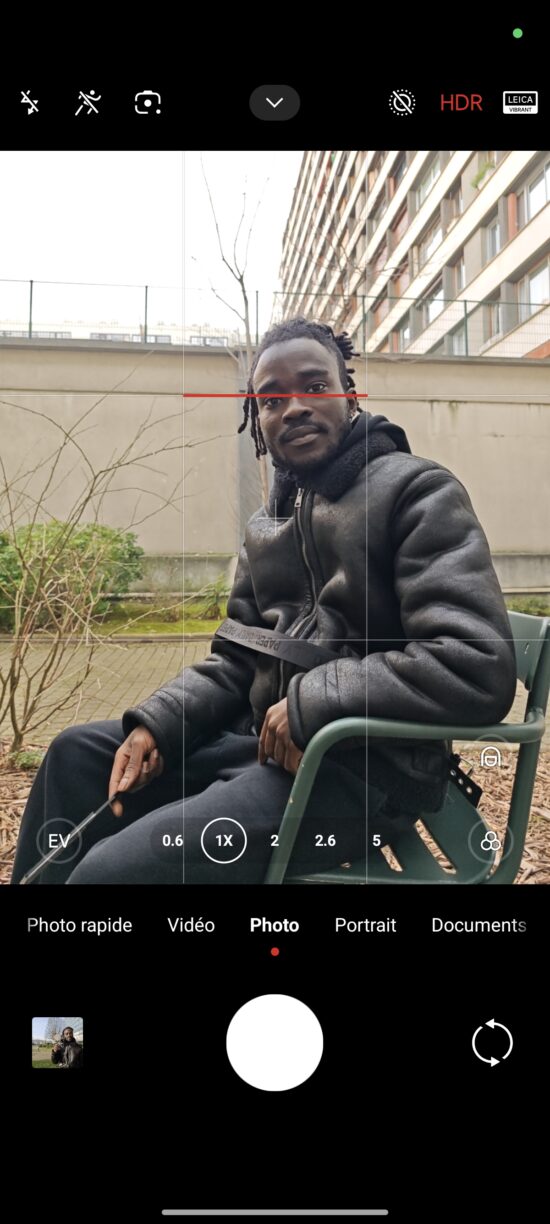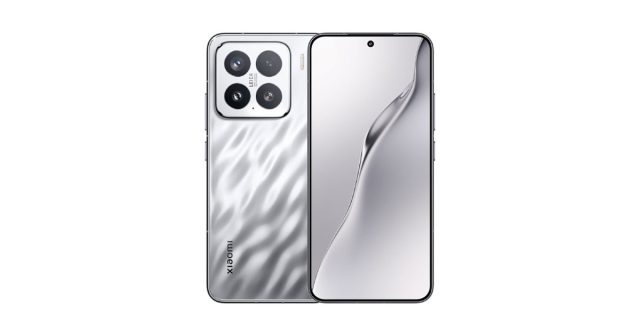We put the Xiaomi 15 through our rigorous DXOMARK Camera test suite to measure its performance in photo, video, and zoom quality from an end-user perspective. This article breaks down how the device fared in a variety of tests and several common use cases and is intended to highlight the most important results of our testing with an extract of the captured data.
Overview
Key camera specifications:
- Primary: 50MP, 23mm equivalent f/1.62-aperture lens, OIS
- Ultra-Wide: 50MP, 14mm equivalent f/2.2-aperture lens (115˚ field of view)
- Tele: 50MP, 60mm equivalent f/2.0-aperture lens, OIS
Scoring
Sub-scores and attributes included in the calculations of the global score.
Use cases & Conditions
Use case scores indicate the product performance in specific situations. They are not included in the overall score calculations.
Outdoor
Photos & videos shot in bright light conditions (≥1000 lux)
Indoor
Photos & videos shot in good lighting conditions (≥100lux)
Lowlight
Photos & videos shot in low lighting conditions (<100 lux)
Friends & Family
Portrait and group photo & videos
 22nd
22nd
4. Apple iPhone 16 Pro Max
157
10. Apple iPhone 15 Pro Max
154
22. Honor Magic4 Ultimate
147
26. Apple iPhone 14 Pro Max
146
26. Motorola Edge 50 Ultra
146
26. Samsung Galaxy S25 Ultra
146
32. Samsung Galaxy S24 Ultra
144
34. Apple iPhone 13 Pro Max
141
34. Google Pixel 9 Pro Fold
141
38. Samsung Galaxy S23 Ultra
140
43. Tecno Camon 40 Pro 5G
138
45. Vivo X80 Pro (Snapdragon)
137
52. Samsung Galaxy S22 Ultra (Snapdragon)
135
52. Vivo X80 Pro (MediaTek)
135
59. Samsung Galaxy Z Fold6
133
59. Samsung Galaxy S24+ (Exynos)
133
59. Samsung Galaxy S24 FE
133
59. Samsung Galaxy S24 (Exynos)
133
69. Samsung Galaxy Z Flip6
132
70. Apple iPhone 12 Pro Max
131
70. Samsung Galaxy S22 Ultra (Exynos)
131
81. Samsung Galaxy Z Fold5
128
83. Asus Smartphone for Snapdragon Insiders
127
83. Samsung Galaxy Z Flip5
127
83. Samsung Galaxy S23 FE
127
88. Vivo X70 Pro (MediaTek)
126
92. Asus Zenfone 11 Ultra
125
92. Samsung Galaxy S22+ (Exynos)
125
97. Samsung Galaxy Z Fold4
124
100. Apple iPhone 11 Pro Max
122
105. Xiaomi Redmi Note 13 Pro Plus 5G
121
106. Samsung Galaxy Z Fold3 5G
120
106. Samsung Galaxy S22 (Exynos)
120
106. Xiaomi Redmi Note 13 Pro 5G
120
111. Xiaomi Redmi Note 14 Pro+ 5G
118
114. Apple iPhone 12 mini
117
114. Samsung Galaxy S21 Ultra 5G (Snapdragon)
117
114. Samsung Galaxy S21 FE 5G (Snapdragon)
117
114. Samsung Galaxy S21 5G (Snapdragon)
117
120. Vivo X60 Pro 5G (Snapdragon)
116
123. Motorola Edge 50 Neo
115
123. Samsung Galaxy S21+ 5G (Snapdragon)
115
123. Samsung Galaxy S21 Ultra 5G (Exynos)
115
133. Crosscall Stellar-X5
113
133. Xiaomi Redmi Note 12 Pro+ 5G
113
137. Samsung Galaxy Z Flip4
112
139. Samsung Galaxy Z Flip3 5G
111
139. Samsung Galaxy S21+ 5G (Exynos)
111
139. Samsung Galaxy S21 5G (Exynos)
111
144. Samsung Galaxy A55 5G
108
144. Vivo X60 Pro 5G (Exynos)
108
149. Samsung Galaxy A54 5G
107
150. Xiaomi Redmi Note 14 Pro 5G
106
153. Samsung Galaxy A35 5G
104
154. Motorola Edge 40 Neo
103
154. Xiaomi Redmi Note 14 5G
103
156. Xiaomi Redmi Note 12 Pro 5G
102
158. Motorola Edge 30 Pro
101
160. Apple iPhone SE (2022)
100
162. Motorola Moto g75 5G
96
168. Samsung Galaxy A34 5G
92
168. Samsung Galaxy A25 5G
92
172. Xiaomi Redmi Note 13 5G
91
174. Motorola Moto g85 5G
88
174. Samsung Galaxy A52s 5G
88
174. Samsung Galaxy A52 5G
88
178. Motorola moto g54 5G
85
178. Samsung Galaxy A33 5G
85
178. Samsung Galaxy A16 LTE
85
181. Honor Magic6 Lite (5300 mAh)
84
181. Xiaomi Redmi Note 14
84
184. Samsung Galaxy A15 5G
83
186. Samsung Galaxy A15 LTE
81
187. Samsung Galaxy A53 5G
79
189. Xiaomi Redmi Note 11 Pro 5G
78
191. Samsung Galaxy A16 5G
77
193. Motorola Moto G35 5G
75
193. Xiaomi Redmi Note 13
75
196. Honor Magic5 Lite 5G
74
198. Samsung Galaxy A23 5G
70
199. Xiaomi Redmi Note 12 5G
69
202. Motorola moto g34 5G
67
202. Samsung Galaxy A14 5G
67
204. Motorola Moto G62 5G
66
205. Xiaomi Redmi Note 11S 5G
65
207. Xiaomi Redmi Note 12
63
212. Honor Magic4 Lite 5G
61
214. Xiaomi Redmi Note 11
60
216. Crosscall Stellar-M6
59
223. Xiaomi Redmi 10 2022
51
225. Samsung Galaxy A22 5G
48
 20th
20th
4. Apple iPhone 16 Pro Max
157
10. Apple iPhone 15 Pro Max
154
20. Honor Magic4 Ultimate
147
23. Apple iPhone 14 Pro Max
146
23. Motorola Edge 50 Ultra
146
23. Samsung Galaxy S25 Ultra
146
28. Samsung Galaxy S24 Ultra
144
30. Apple iPhone 13 Pro Max
141
30. Google Pixel 9 Pro Fold
141
34. Samsung Galaxy S23 Ultra
140
38. Vivo X80 Pro (Snapdragon)
137
43. Samsung Galaxy S22 Ultra (Snapdragon)
135
43. Vivo X80 Pro (MediaTek)
135
48. Samsung Galaxy Z Fold6
133
48. Samsung Galaxy S24+ (Exynos)
133
53. Samsung Galaxy Z Flip6
132
54. Apple iPhone 12 Pro Max
131
54. Samsung Galaxy S22 Ultra (Exynos)
131
61. Samsung Galaxy Z Fold5
128
63. Asus Smartphone for Snapdragon Insiders
127
63. Samsung Galaxy Z Flip5
127
68. Asus Zenfone 11 Ultra
125
68. Samsung Galaxy S22+ (Exynos)
125
71. Samsung Galaxy Z Fold4
124
73. Apple iPhone 11 Pro Max
122
76. Samsung Galaxy Z Fold3 5G
120
81. Samsung Galaxy S21 Ultra 5G (Snapdragon)
117
83. Samsung Galaxy S21+ 5G (Snapdragon)
115
83. Samsung Galaxy S21 Ultra 5G (Exynos)
115
89. Samsung Galaxy Z Flip4
112
90. Samsung Galaxy Z Flip3 5G
111
90. Samsung Galaxy S21+ 5G (Exynos)
111
Pros
- Good texture and noise in photo, especially in bright light and indoors
- Accurate exposure in photo and video
- Accurate color rendering and nice white balance in bright light photos and videos
- High levels of detail in tele zoom shots, especially at close and medium range settings
Cons
- Occasional warm color casts in photo and video
- Slightly limited dynamic range in some HDR scenes
- Limited depth of field results in blurred background faces in group shots
- Occasional contrast issues in scenes with strong backlighting
- Slight exposure instabilities in video mode
In the DXOMARK Camera tests, the Xiaomi 15 delivered a well-rounded camera performance, making it a solid choice for both photography and videography enthusiasts. The Xiaomi 15 comes with a triple-camera system, covering focal lengths from ultra-wide to medium range tele, but has to make do without the 15 Pro model’s dedicated long tele camera module.
In our photo tests, the Xiaomi 15’s camera setup achieved excellent results, delivering a wide dynamic range, low noise levels, and vibrant colors. However, some areas for improvement remained. Our testers observed noticeable color casts in low light conditions, and the limited depth of field made it difficult to maintain all subjects in group shots sharply focused. There were also some contrast issues in extreme HDR scenes and we noticed some inconsistencies across consecutive shots when shooting in burst mode.
Despite the simpler tele setup than on the 15 Pro, the camera delivered nice tele shots, with quite high levels of detail. The ultra-wide delivered solid image quality at the opposite end of the zoom spectrum, but had slightly higher noise levels than the best in class. Overall video quality was good, too, with good exposure, despite some slight instabilities. Some color casts were observed in indoor and low light video footage.
Test summary
About DXOMARK Camera tests: DXOMARK’s Camera evaluations take place in laboratories and in real-world situations using a wide variety of subjects. The scores rely on objective tests for which the results are calculated directly by measurement software on our laboratory setups, and on perceptual tests in which a sophisticated set of metrics allow a panel of image experts to compare aspects of image quality that require human judgment. Testing a smartphone involves a team of engineers and technicians for about a week. Photo, Zoom, and Video quality are scored separately and then combined into an Overall score for comparison among the cameras in different devices. For more information about the DXOMARK Camera protocol, click here. More details on smartphone camera scores are available here. The following section gathers key elements of DXOMARK’s exhaustive tests and analyses. Full performance evaluations are available upon request. Please contact us on how to receive a full report.
Xiaomi 15 Camera Scores
This graph compares DXOMARK photo, zoom and video scores between the tested device and references. Average and maximum scores of the price segment are also indicated. Average and maximum scores for each price segment are computed based on the DXOMARK database of devices tested.
Photo
150
Huawei Pura 70 Ultra
Huawei Pura 70 Ultra
About DXOMARK Camera Photo tests
For scoring and analysis, DXOMARK engineers capture and evaluate more than 2,600 test images both in controlled lab environments and in outdoor, indoor and low-light natural scenes, using the camera’s default settings. The photo protocol is designed to take into account the main use cases and is based on typical shooting scenarios, such as portraits, family, and landscape photography. The evaluation is performed by visually inspecting images against a reference of natural scenes, and by running objective measurements on images of charts captured in the lab under different lighting conditions from 1 to 1,000+ lux and color temperatures from 2,300K to 6,500K.
The Xiaomi 15 Ultra did well in the DXOMARK photo tests but some areas for improvement remained. Like the flagship device 15 Ultra, the Xiaomi 15 was capable of capturing still images with a zero shutter lag and a reliable autofocus. Our testers observed only a handful of autofocus failures across all light conditions, but also noticed that in low light autofocus performance could be somewhat slower than on the best-in-class devices. In addition, focus was quite stable across consecutive shots, reliably locking onto the subject. On the downside, the primary camera’s quite narrow depth of field meant that subjects in background of the scene could be out of focus.
We also observed color inaccuracies in some low light scenes. In some difficult backlit scenes our testers noticed low contrast on subjects, in addition to lens flare artifacts. Image noise could be slightly intrusive, especially when capturing images in low light.
Xiaomi 15 Photo scores
The photo tests analyze image quality attributes such as exposure, color, texture, and noise in various light conditions. Autofocus performances and the presence of artifacts on all images captured in controlled lab conditions and in real-life images are also evaluated. All these attributes have a significant impact on the final quality of the images captured with the tested device and can help to understand the camera’s main strengths and weaknesses.

Exposure
118
Huawei Pura 70 Ultra
Huawei Pura 70 Ultra

Color
120
Apple iPhone 16 Pro
Apple iPhone 16 Pro
Exposure and color are the key attributes for technically good pictures. For exposure, the main attribute evaluated is the brightness of the main subject through various use cases such as landscape, portrait, or still life. Other factors evaluated are the contrast and the dynamic range, eg. the ability to render visible details in both bright and dark areas of the image. Repeatability is also important because it demonstrates the camera’s ability to provide the same rendering when shooting several images of the same scene.
For color, the image quality attributes analyzed are skin-tone rendering, white balance, color shading, and repeatability. For color and skin tone rendering, we penalize unnatural colors but we respect a manufacturer’s choice of color signature.

Xiaomi 15 – Contrast issues and color quantization

Xiaomi 15 Ultra – Nice contrast

Autofocus
94
Huawei Pura 70 Ultra
Huawei Pura 70 Ultra
Autofocus tests concentrate on focus accuracy, focus repeatability, shooting time delay, and depth of field. Shooting delay is the difference between the time the user presses the capture button and the time the image is actually taken. It includes focusing speed and the capability of the device to capture images at the right time, what is called ‘zero shutter lag’ capability. Even if a shallow depth of field can be pleasant for a single subject portrait or close-up shot, it can also be a problem in some specific conditions such as group portraits; Both situations are tested. Focus accuracy is also evaluated in all the real-life images taken, from infinity to close-up objects and in low light to outdoor conditions.
Autofocus irregularity and speed: 100Lux Δ7EV TL84 Handheld

Texture
120
Xiaomi 15 Ultra
Xiaomi 15 Ultra
Texture tests analyze the level of details and the texture of subjects in the images taken in the lab as well as in real-life scenarios. For natural shots, particular attention is paid to the level of details in the bright and dark areas of the image. Objective measurements are performed on chart images taken in various lighting conditions from 1 to 1000 lux and different kinds of dynamic range conditions. The charts used are the proprietary DXOMARK chart (DMC) and the Dead Leaves chart.
DXOMARK CHART (DMC) detail preservation score vs lux levels for tripod and handheld conditions
This graph shows the evolution of the DMC detail preservation score with the level of lux, for two holding conditions. DMC detail preservation score is derived from an AI-based metric trained to evaluate texture and details rendering on a selection of crops of our DXOMARK chart.

Noise
107
Huawei Pura 70 Ultra
Huawei Pura 70 Ultra
Noise tests analyze various attributes of noise such as intensity, chromaticity, grain, structure on real-life images as well as images of charts taken in the lab. For natural images, particular attention is paid to the noise on faces, landscapes, but also on dark areas and high dynamic range conditions. Noise on moving objects is also evaluated on natural images. Objective measurements are performed on images of charts taken in various conditions from 1 to 1000 lux and different kinds of dynamic range conditions. The chart used is the Dead Leaves chart and the standardized measurement such as Visual Noise derived from ISO 15739.
Visual noise evolution with illuminance levels in handheld condition
This graph shows the evolution of visual noise metric with the level of lux in handheld condition. The visual noise metric is the mean of visual noise measurement on all patches of the Dead Leaves chart in the AFHDR setup. DXOMARK visual noise measurement is derived from ISO15739 standard.

Artifacts
80
Xiaomi Redmi 12 5G
Xiaomi Redmi 12 5G
The artifacts evaluation looks at lens shading, chromatic aberrations, geometrical distortion, edges ringing, halos, ghosting, quantization, unexpected color hue shifts, among others type of possible unnatural effects on photos. The more severe and the more frequent the artifact, the higher the point deduction on the score. The main artifacts observed and corresponding point loss are listed below.
Main photo artifacts penalties
Bokeh
75
Huawei Pura 70 Ultra
Huawei Pura 70 Ultra
Bokeh is tested in one dedicated mode, usually portrait or aperture mode, and analyzed by visually inspecting all the images captured in the lab and in natural conditions. The goal is to reproduce portrait photography comparable to one taken with a DLSR and a wide aperture. The main image quality attributes paid attention to are depth estimation, artifacts, blur gradient, and the shape of the bokeh blur spotlights. Portrait image quality attributes (exposure, color, texture) are also taken into account.

Xiaomi 15 – Accurate depth estimation and good subject isolation

Xiaomi 15 – Depth artifacts ( on the mannequin’s crown)

Xiaomi 15 Ultra – Depth artifacts less intrusive
In our tests, we found the Xiaomi 15 bokeh mode to be quite similar to that of the Xiaomi 15 Ultra. It produced natural looking images, with realistic looking subject isolation, a smooth simulated aperture and natural blur gradient. This said, some depth estimation artifacts were noticeable, particularly in complex scenes. In addition, there were some slight exposure inconsistencies and artifacts across consecutive shots in a series.
Preview
87
Apple iPhone 16 Pro
Apple iPhone 16 Pro
Preview tests analyze the image quality of the camera app’s preview of the image, with particular attention paid to the difference between the capture and the preview, especially regarding dynamic range and the application of the bokeh effect. Also evaluated is the smoothness of the exposure, color and focus adaptation when zooming from the minimal to the maximal zoom factor available. The preview frame rate is measured using the LED Universal Timer.

Xiaomi 15 – Preview: Limited dynamic range

Xiaomi 15 – Capture: Wider dynamic range
Zoom
152
Xiaomi 15 Ultra
Xiaomi 15 Ultra
About DXOMARK Camera Zoom tests
DXOMARK engineers capture and evaluate over 400 test images in controlled lab environments and in outdoor, indoor, and low-light natural scenes, using the camera’s default settings and pinch zoom at various zoom factors from ultra wide to very long-range zoom. The evaluation is performed by visually inspecting the images against a reference of natural scenes, and by running objective measurements of chart mages captured in the lab under different conditions from 20 to 1000 lux and color temperatures from 2300K to 6500K.
Tele zoom is where the Xiaomi 15’s camera performance differs most from its bigger brother 15 Ultra. While the flagship model comes with two dedicated tele cameras, the Xiaomi 15 has to make do with a single 60mm telephoto module. Despite the simpler tele setup, in our tests, it delivered quite good image detail in telephoto shots, on both the tele lens or when applying digital zoom to the primary camera image. In addition, the ultra-wide camera performed well, capturing overall good image quality. This said, it trailed slightly behind the best-in-class devices, especially in terms of image noise.
Xiaomi 15 Zoom Scores
This graph illustrates the relative scores for the different zoom ranges evaluated. The abscissa is expressed in 35mm equivalent focal length. Zooming-in scores are displayed on the right and Zooming-out scores on the left.

Wide
102
Huawei Pura 70 Ultra
Huawei Pura 70 Ultra
These tests analyze the performance of the ultra-wide camera at several focal lengths from 12 mm to 20 mm. All image quality attributes are evaluated, with particular attention paid to such artifacts as chromatic aberrations, lens softness, and distortion. Pictures below are an extract of tested scenes.

Xiaomi 15 – Good detail, noise in the sky

Xiaomi 15 Ultra – Good detail

Apple iPhone 16 Pro Max – Good detail

Tele
118
Xiaomi 15 Ultra
Xiaomi 15 Ultra
All image quality attributes are evaluated at focal lengths from approximately 40 mm to 300 mm, with particular attention paid to texture and detail. The score is derived from a number of objective measurements in the lab and perceptual analysis of real-life images.
DXOMARK CHART (DMC) detail preservation score per focal length
DXOMARK CHART (DMC) detail preservation score per focal length
This graph shows the evolution of the DMC detail preservation score with respect to the full-frame equivalent focal length for different light conditions. The x-axis represents the equivalent focal length measured for each corresponding shooting distance and the y-axis represents the maximum details preservation metric score: higher value means better quality. Large dots correspond to zoom ratio available in the user interface of the camera application.
DXOMARK CHART (DMC) detail preservation score per focal length
This graph shows the evolution of the DMC detail preservation score with respect to the full-frame equivalent focal length for different light conditions. The x-axis represents the equivalent focal length measured for each corresponding shooting distance and the y-axis represents the maximum details preservation metric score: higher value means better quality. Large dots correspond to zoom ratio available in the user interface of the camera application.
DXOMARK CHART (DMC) detail preservation score per focal length
This graph shows the evolution of the DMC detail preservation score with respect to the full-frame equivalent focal length for different light conditions. The x-axis represents the equivalent focal length measured for each corresponding shooting distance and the y-axis represents the maximum details preservation metric score: higher value means better quality. Large dots correspond to zoom ratio available in the user interface of the camera application.
Video
133
Apple iPhone 16 Pro
Apple iPhone 16 Pro
About DXOMARK Camera Video tests
DXOMARK engineers capture and evaluate more than 2.5 hours of video in controlled lab environments and in natural low-light, indoor and outdoor scenes, using the camera’s default settings. The evaluation consists of visually inspecting natural videos taken in various conditions and running objective measurements on videos of charts recorded in the lab under different conditions from 1 to 1000+ lux and color temperatures from 2,300K to 6,500K.
In video mode, we tested the Xiaomi 15 at 4K resolution and a frame rate of 30fps which delivered the overall best results. With these settings, video exposure was good, despite some slight instabilities. Our testers also noticed some inaccurate color casts when recording footage in indoor scenes or low light conditions.
The video autofocus was accurate and provided smooth transitions. Video noise was generally well under control in bright light and indoor scenes but could be more intrusive in low light. In dim conditions the level of recorded detail was also low, despite the 4K video resolution.
Xiaomi 15 Video scores

Exposure
104
Oppo Find X8 Pro
Oppo Find X8 Pro

Color
105
Oppo Find X8 Pro
Oppo Find X8 Pro
Exposure tests evaluate the brightness of the main subject and the dynamic range, eg. the ability to render visible details in both bright and dark areas of the image. Stability and temporal adaption of the exposure are also analyzed.
Image-quality color analysis looks at color rendering, skin-tone rendering, white balance, color shading, stability of the white balance and its adaption when light is changing.
Xiaomi 15 – Accurate face exposure, natural skin tones but slight exposure instabilities
Apple Iphone 16 Pro Max – Accurate face exposure, natural skin tones

Texture
105
Oppo Find X6 Pro
Oppo Find X6 Pro
Texture tests analyze the level of details and texture of the real-life videos as well as the videos of charts recorded in the lab. Natural videos recordings are visually evaluated, with particular attention paid to the level of details in the bright and areas as well as in the dark. Objective measurements are performed of images of charts taken in various conditions from 1 to 1000 lux. The charts used are the DXOMARK chart (DMC) and Dead Leaves chart.
DXOMARK CHART (DMC) detail preservation video score vs lux levels
This graph shows the evolution of the DMC detail preservation video score with the level of lux in video. DMC detail preservation score is derived from an AI-based metric trained to evaluate texture and details rendering on a selection of crops of our DXOMARK chart.

Noise
105
Apple iPhone 16 Pro
Apple iPhone 16 Pro
Noise tests analyze various attributes of noise such as intensity, chromaticity, grain, structure, temporal aspects on real-life video recording as well as videos of charts taken in the lab. Natural videos are visually evaluated, with particular attention paid to the noise in the dark areas and high dynamic range conditions. Objective measurements are performed on the videos of charts recorded in various conditions from 1 to 1000 lux. The chart used is the DXOMARK visual noise chart.
Spatial visual noise evolution with the illuminance level
Temporal visual noise evolution with the illuminance level
This graph shows the evolution of temporal visual noise with the level of lux. Temporal visual noise is measured on the visual noise chart in the video noise setup.

Stabilization
111
Apple iPhone 16 Pro
Apple iPhone 16 Pro
Stabilization evaluation tests the ability of the device to stabilize footage thanks to software or hardware technologies such as OIS, EIS, or any others means. The evaluation looks at residual motion, smoothness, jellow artifacts and residual motion blur on walk and run use cases in various lighting conditions. The video below is an extract from one of the tested scenes.
Apple iPhone 16 Pro Max: Good stabilization, slight loss of sharpness between frames

Artifacts
74
Xiaomi 12S Ultra
Xiaomi 12S Ultra
Artifacts are evaluated with MTF and ringing measurements on the SFR chart in the lab as well as frame-rate measurements using the LED Universal Timer. Natural videos are visually evaluated by paying particular attention to artifacts such as aliasing, quantization, blocking, and hue shift, among others. The more severe and the more frequent the artifact, the higher the point deduction from the score. The main artifacts and corresponding point loss are listed below.
Main video artifacts penalties










